Grand Coulee Dam
by Andrew Boyd
Today, inspired by nature. The University of Houston presents this series about the machines that make our civilization run, and the people whose ingenuity created them.
The Columbia River, carved through the Pacific Northwest, has an especially interesting geographic feature. High above the river in central Washington is the remnant of another river; a deep gorge stretching sixty miles to the south known as the Grand Coulee. The coulee was carved by cataclysmic flooding when glaciers receded some fifteen-thousand years ago, after which it was left dry.
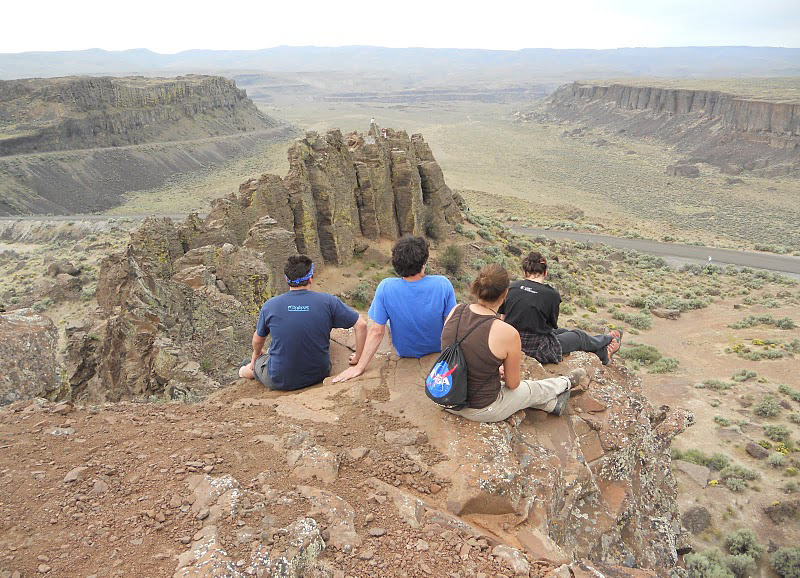
The students perch on a precipice near Frenchman Springs Coulee. Photo Credit: Flickr/Anna Brunner
When you see the coulee, it beckons to be filled with water. And in the early twentieth century people hearkened the call. The U.S. Bureau of Reclamation was looking to capture spring snowmelt from the Rockies, snowmelt which in turn could be used to irrigate the surrounding arid but fertile plains.
The apparent answer was to dam the Columbia, raising the water to a level where it would spill into the coulee for storage. Problem was, such a dam would need to stand one-hundred stories tall. Could U.S. engineers rise to the occasion?
Meanwhile, a political battle was brewing further upstream. The Washington Water and Power Company feared it would lose business to the federal government. Citizens backing the power company wanted to build an irrigation canal directly from the mountains, bypassing the Grand Coulee. Known as the ditchers, the group's plan didn't entail a giant dam.
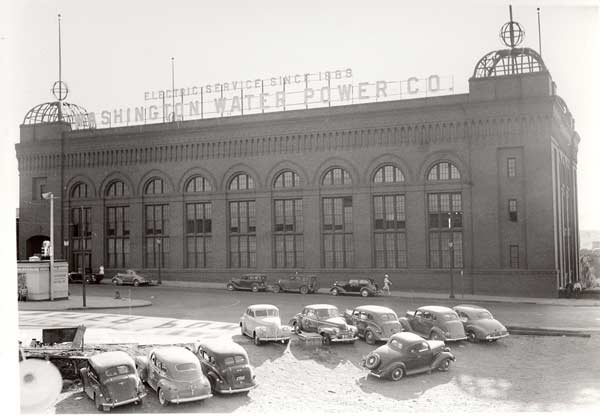
Washington Water Power Company Photo Credit: Secretary of State Blogs
Even more, dam enthusiasts realized a coulee-filling dam couldn't be built because it would cause water to back up more than 150 miles into Canada. The highest a dam could be built that wouldn't lead to broken international treaties would rise only half the needed height. Still, champions of the dam weren't deterred. Build the dam only fifty stories, they said, and we'll pump water the rest of the way up to the coulee. Energy to do so would be supplied by the dam itself. Proponents of this plan were known as the pumpers.
Both sides relied on experts and innuendo and the battle raged for decades. But the pumpers held a hole card. Unlike irrigation canals, dams generate electricity -- more than enough to pay for construction costs. Eventually, with the help of President Franklin Roosevelt, the Grand Coulee Dam got the go ahead. The 125 square mile lake it created is named after the president.
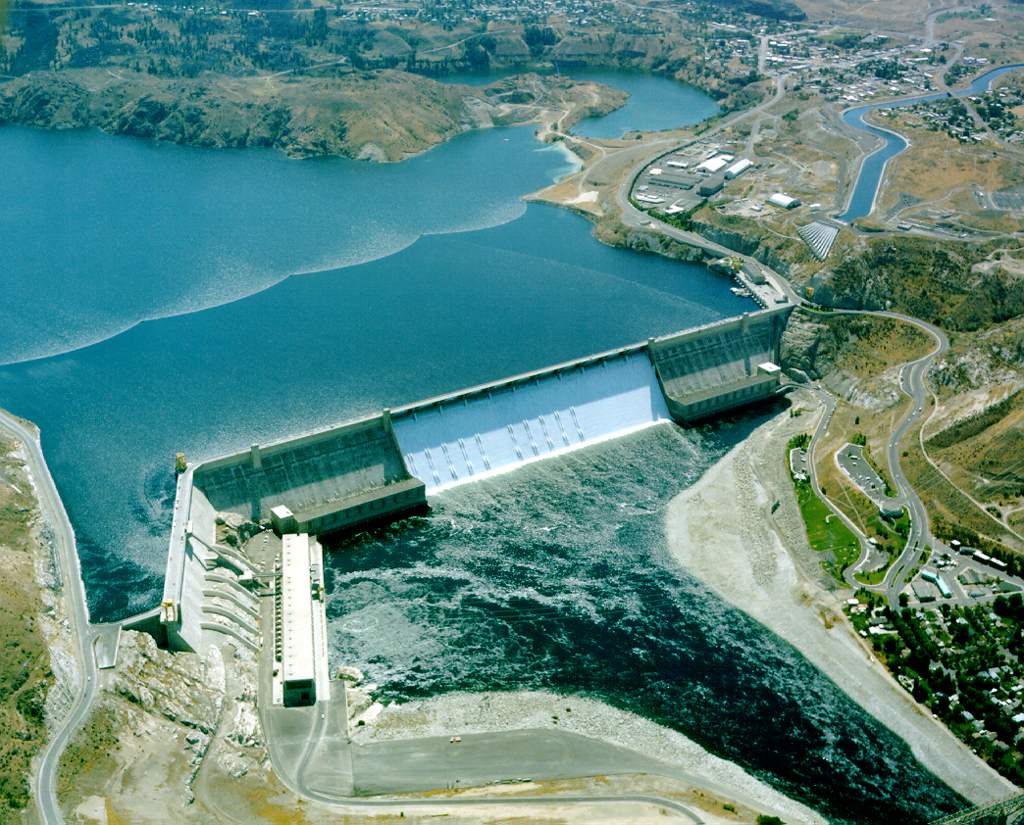
Grand Coulee Dam Photo Credit: Wikimedia Commons
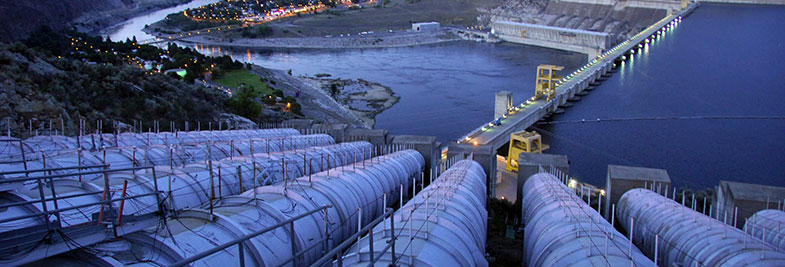
Grand Coulee Dam at night. Photo Credit: Bureau of Reclamation
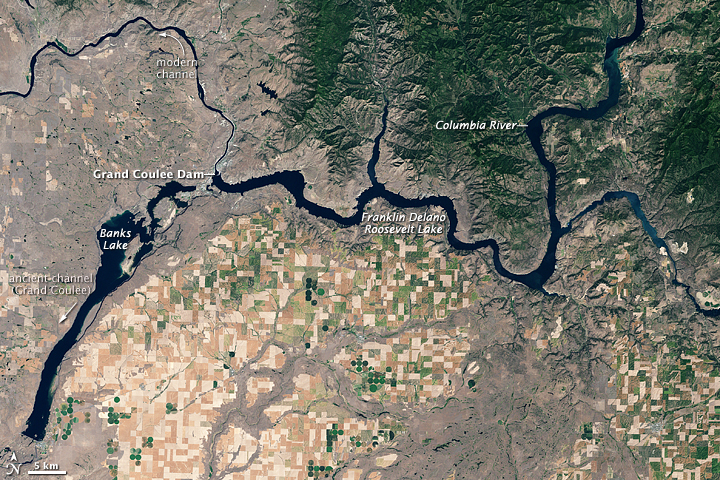
Arial Map of the Grand Coulee Dam Photo Credit: Wikimedia Commons
And a bonus story about the dam. Years after it was built, a third power generation plant was added that the original architects hadn't envisioned. What made the new plant special is that it used pump-storage power generation. When electrical demand is low, the plant pumps water up to the Grand Coulee. But when demand is high, water from the coulee is allowed to flow back down into the river through generators, thus creating electricity. In effect, the dam and the coulee act like a giant battery, though energy is stored in the form of gravitational potential from the water high above the plant, rather than through the chemicals found in store bought batteries.
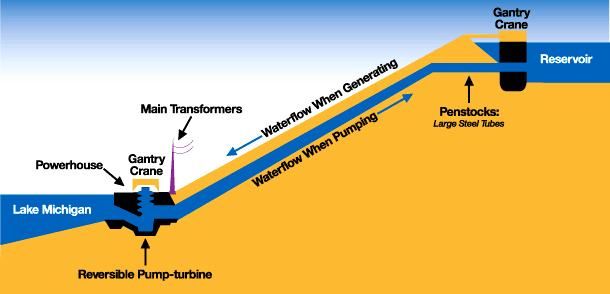
Diagram of how the Ludington pumped storage facility works. Photo Credit: consumersenergy.com
I'm Andy Boyd at the University of Houston, where we're interested in the way inventive minds work.
(Theme music)
Water is actually pumped into Banks Lake which was formed after water was discharged into the Grand Coulee. I've avoided introducing this distinction for simplicity in the broadcast.
For a related episode, see CATACLYSM.
Grand Coulee Dam. From the Wikipedia website: https://en.wikipedia.org/wiki/Grand_Coulee_Dam#Third_Powerplant. Accessed October 1, 2015.
P. Pitzer and I. Valle. Grand Coulee: Harnessing a Dream. Pullman, Washington: Washington State University Press, 1994.
This episode was first aired on October 15, 2015